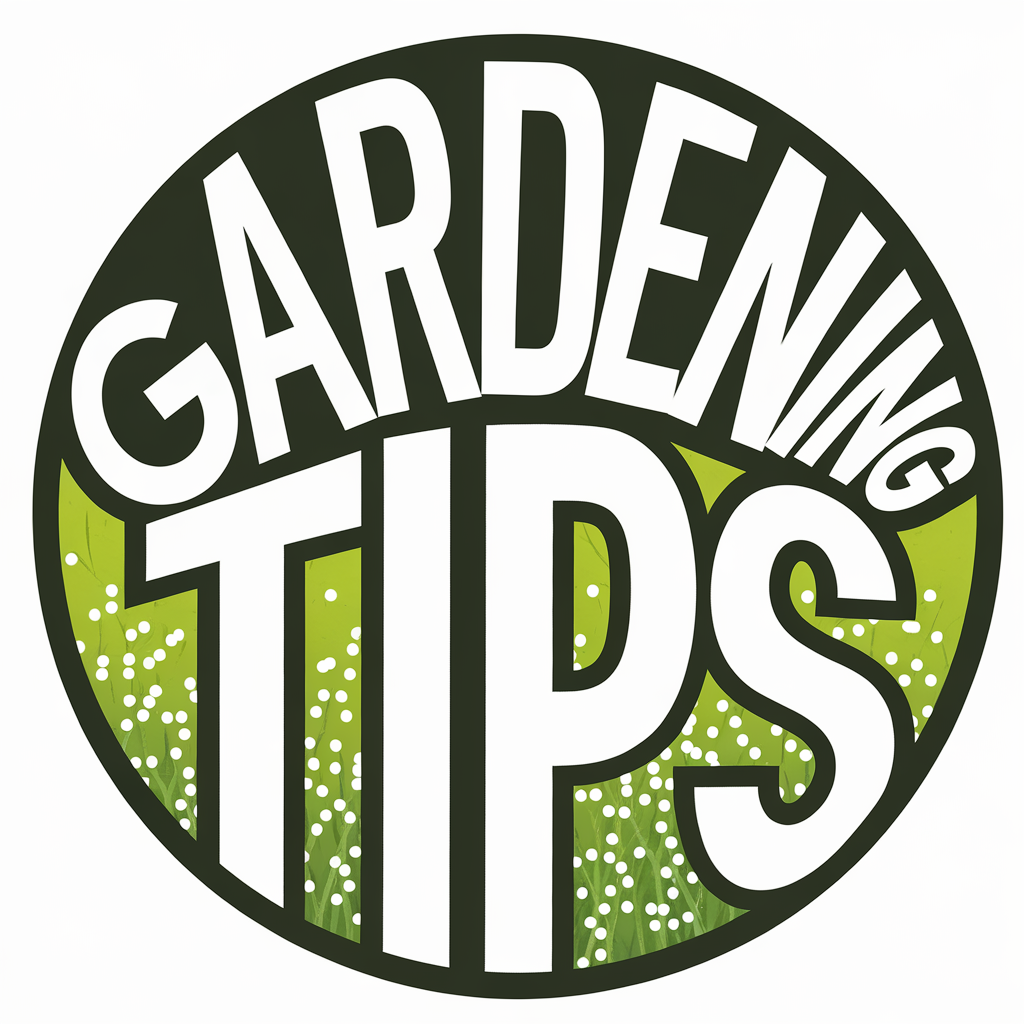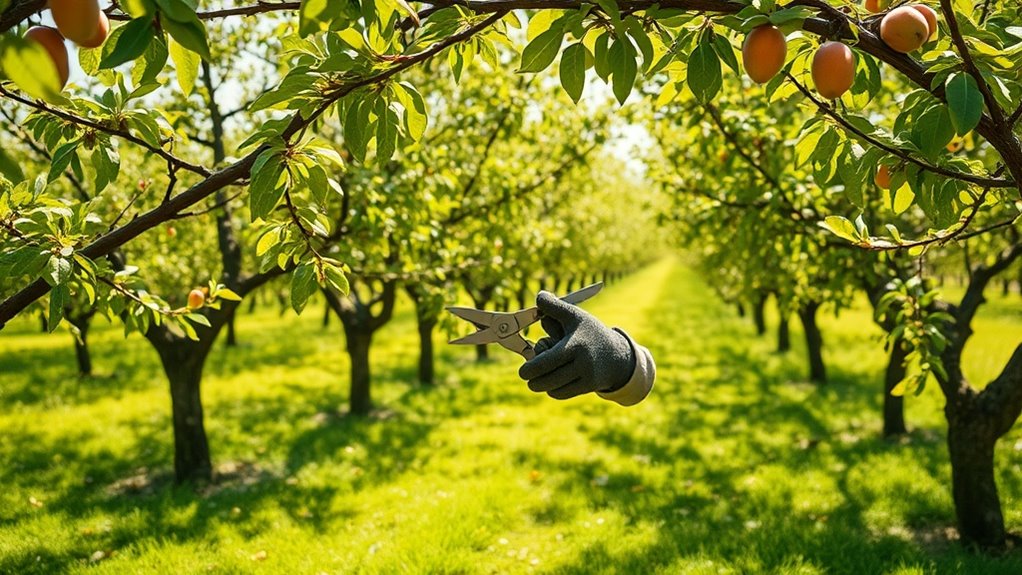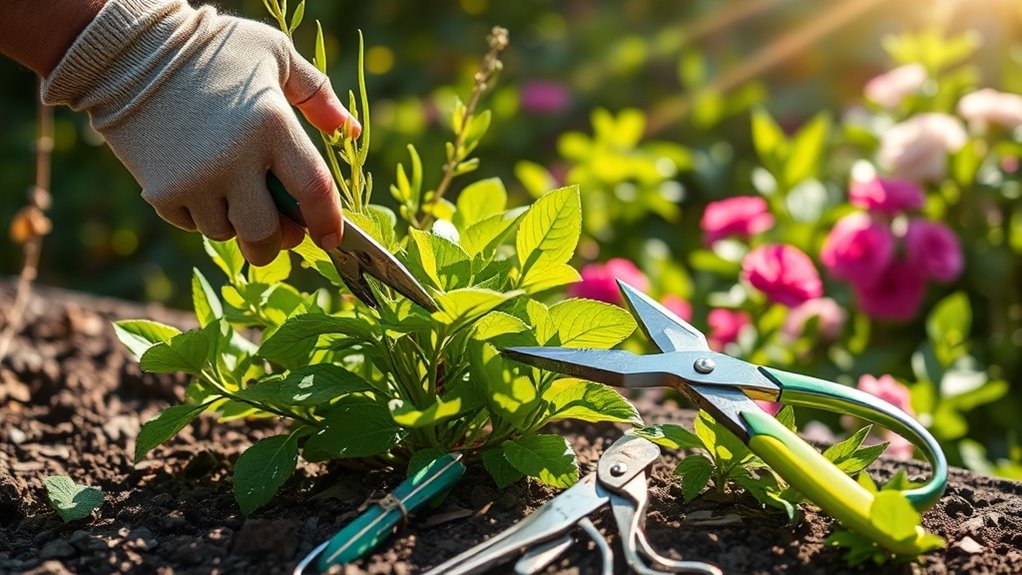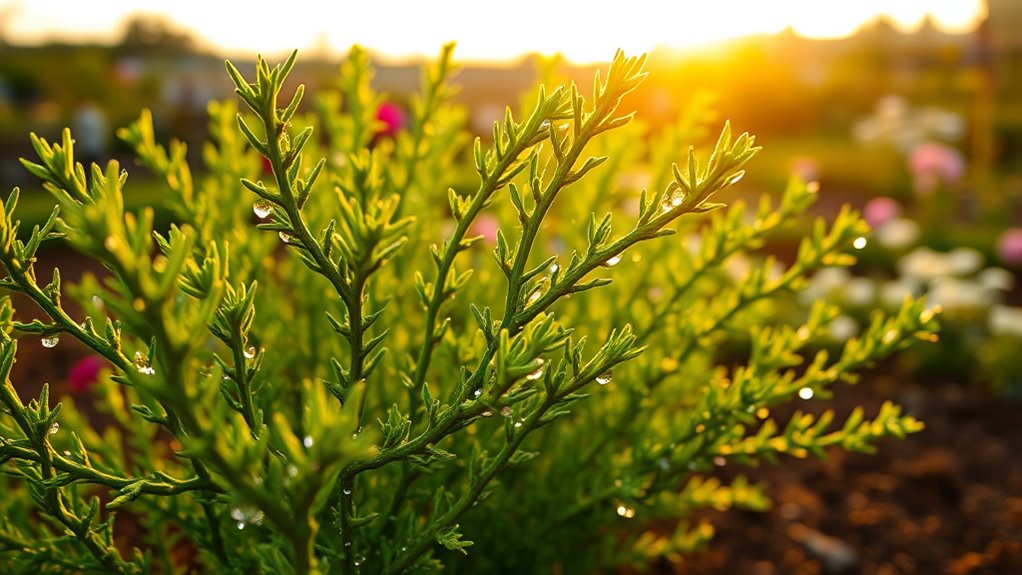This Pruning Method Made My Roses Bloom All Season
Pruning your roses at the right time is essential for achieving blooms all season. Focus on early spring, just as buds begin to swell. Use sharp bypass pruners for precise cuts, targeting dead or damaged wood while maintaining an open center for airflow. Avoid over-pruning, which can stunt growth. After pruning, monitor your soil and water weekly to keep your roses healthy. Discover more about tools and techniques that maximize your roses’ blooming potential.
Understanding the Importance of Pruning
Why is pruning essential for your roses?
Pruning roses enhances their health, encourages new growth, and improves air circulation.
By removing dead or diseased wood, you’re preventing pests and diseases from taking hold.
It stimulates blooming by redirecting the plant’s energy toward healthy stems, resulting in more vibrant flowers.
Additionally, proper pruning shapes your rose bushes, ensuring they maintain an appealing form and size.
You’ll also reduce overcrowding, which can lead to poor air circulation and increased vulnerability to fungal infections.
Understanding pruning roses is crucial for maximizing their beauty and longevity, making your garden a stunning display all season long. Moreover, mastering the art of pruning techniques can significantly boost your gardening success.
Best Time to Prune Roses
The best time to prune roses typically falls in early spring, just as the buds begin to swell but before they open.
This timing allows you to remove dead or damaged wood while promoting healthy growth.
In colder regions, wait until after the final frost to avoid damaging new growth.
For most rose varieties, aim for late February to early April.
Observing local weather patterns will help you determine the exact timing.
By pruning during this window, you encourage robust blooms and maintain the plant’s shape, ensuring your roses thrive throughout the growing season. Additionally, remember that proper timing is crucial for maximizing the benefits of pruning.
Happy pruning!
Tools Needed for Effective Pruning
After pinpointing the best time to prune your roses, gathering the right tools is essential for achieving clean cuts and promoting healthy growth.
You’ll need sharp bypass pruners for precise cuts and a pair of loppers for thicker stems.
A pruning saw can help with larger branches.
Don’t forget gloves to protect your hands from thorns and a tarp to catch clippings for easy cleanup.
A measuring tape can also assist in ensuring uniform cuts.
Finally, consider disinfecting your tools with rubbing alcohol to prevent disease transmission between plants.
With the right tools, you’re ready to enhance your rose garden. Additionally, proper pruning techniques can significantly impact the overall health and blooming potential of your roses.
Step-by-Step Pruning Techniques
Begin by examining the structure of your rose bush to determine which branches need attention. Identify any dead, damaged, or crossing branches; these should be your first targets. Use sharp pruning shears to make clean cuts at a 45-degree angle, about a quarter-inch above a healthy bud. Next, remove any thin, weak stems to encourage robust growth. Aim to maintain an open center for airflow, which helps prevent disease. After pruning, step back and assess the overall shape, ensuring it’s balanced. Finally, clean your tools to prevent disease spread and encourage new growth for a vibrant blooming season. Implementing a specific pruning habit can lead to healthier, more abundant plants.
Common Mistakes to Avoid
When pruning roses, you need to be aware of common mistakes that can hinder their growth.
Over-pruning can remove essential wood, while timing errors may disrupt their blooming cycle.
Additionally, ignoring the overall health of the plant can lead to long-term issues, so stay vigilant about its condition. Proper pruning techniques, such as cutting at the right angle, can also promote healthier growth and blooming in your roses.
Over-Pruning Issues
Over-pruning can severely hinder the health and vigor of your roses, leading to stunted growth and diminished blooms.
One common mistake is cutting too many stems at once; this removes essential photosynthesis surfaces. Additionally, pruning during the wrong season can stress your plants, as they need time to recover.
Avoid removing healthy foliage, which plays an essential role in nutrient absorption.
It’s also essential to use sharp, clean tools to prevent disease transmission.
Always assess your roses’ growth patterns and prune selectively, ensuring you maintain a balance between air circulation and foliage for ideal blooming.
Timing Mistakes
How can you guarantee your roses thrive throughout the growing season?
One common timing mistake is pruning too early or too late.
If you prune before the last frost, you risk damaging new growth.
Conversely, waiting too long can lead to fewer blooms.
Aim to prune in early spring when buds begin to swell but before they open.
Additionally, avoid deadheading at the wrong time; doing so too late in the season can limit new flower production.
Finally, don’t neglect seasonal weather patterns—unexpected frosts can derail your timing, so always monitor forecasts to protect your investment in those beautiful blooms.
Ignoring Plant Health
Though it’s easy to get caught up in the aesthetics of your rose garden, neglecting your plants’ health can lead to significant setbacks.
Healthy roses thrive, while unhealthy ones struggle even with the best pruning techniques.
Pay attention to these critical aspects:
- Soil Quality: Make sure your soil is rich in nutrients and well-draining to support root health.
- Watering Practices: Overwatering or underwatering can stress your plants, leading to disease and poor blooms.
- Pest Management: Regularly inspect for pests and diseases to prevent infestations that can decimate your roses.
Focusing on these factors will enhance your garden’s vigor and blooming potential.
Maintaining Roses After Pruning
After pruning your roses, it’s essential to implement proper watering practices to support their recovery and growth.
Make sure you water deeply but infrequently, allowing the soil to dry slightly between sessions. Additionally, timing your fertilization appropriately can enhance their vitality, so consider applying a balanced fertilizer a few weeks post-pruning to boost new growth. To further optimize your watering strategy, remember that deep watering technique allows moisture to reach the roots, ensuring healthier plants.
Watering Practices for Roses
As you care for your pruned roses, understanding their watering needs is essential for promoting healthy growth and vibrant blooms.
Make sure your roses receive consistent moisture, especially during the growing season.
Here are some key practices:
- Water deeply once a week, allowing the soil to dry slightly between sessions.
- Use mulch to retain soil moisture and regulate temperature.
- Water in the morning to prevent diseases and allow foliage to dry by evening.
Fertilization Timing and Tips
When’s the best time to fertilize your roses after pruning? Aim to fertilize about four to six weeks after pruning, once you notice new growth.
Use a balanced fertilizer, ideally one with equal parts of nitrogen, phosphorus, and potassium.
Apply it in the early morning or late afternoon to prevent leaf burn.
Follow the package instructions for dosage, usually around one cup per established plant.
Water your roses thoroughly post-fertilization to help the nutrients absorb.
Additionally, consider a second application in mid-summer to support ongoing blooming.
Regular monitoring of soil nutrient levels will also support ideal health.





